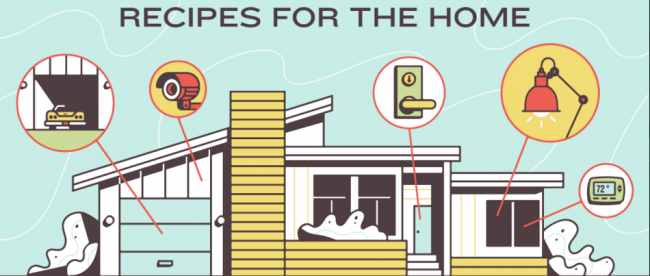Assistive Technology With IFTTT (If This Then That) + IoT (Internet of Things): Part 1
We saw a couple of months ago how Amazon Echo, or Alexa, can be such a huge help to people with disabilities. With very simple commands, Alexa can read us a book, control lights in our house, and also order a pizza for us! However, how about we take things a step further, and make a combination of technologies and applications just do things for us without us having to perform any sort of manual interaction with any app or device?
IFTTT, which stands for If This Then That, has been around for a few years now, and can do exactly what’s described above. With IFTTT you can create “recipes” that look for a certain trigger and then perform a certain action. Here are some examples of IFTTT recipes that can be especially helpful for people with disabilities:
- If I am approaching my house, turn on the living room light, and start playing music.
- If I exit my house, turn off all lights, and set the thermostat to 68 degrees.
- If my plants are dry and they need to be watered, send me a text notification.
- If my client who has Alzheimer’s, goes outside of a specific geographic location, send me a text message.
- If I receive an email from my caregiver, send me a text message.
- If I am on vacation at an exotic place, and I am taking photos there with my phone, upload them automatically to Facebook so my friends and family can see them too.
These are some very simple example of “triggers” (If I am approaching my house) that can initiate “actions” (turn on the living room light), and all of this is done behind the scenes via “recipes”, which are just easy rules that are set up only once in IFTTT with very minimal clicks. These sort of recipes can be beneficial to blind and/or deaf-mute people, people in wheelchairs, people with bad motor skills and muscular dystrophy – anyone for whom interacting with a device like a phone may be an extra step that they would possibly like to avoid.
The IFTTT interface is very simple – it lets you choose from a huge list of “trigger channels” for the “THIS” part. So, if a person in a wheelchair is creating a recipe that will turn off all lights and coffee maker when they leave their house, they will choose the trigger channel “location” and then choose separate “action channels” – “turn off light” and “turn off coffeemaker” for the “THAT” part.
You can watch this video below to see how IFTTT recipes are created for five different scenarios.
- When a patient walks out of a specific geographic location, send the caregiver a text notification with the patient’s location.
- A blind photographer is at a touristy location and is taking photos with their iPhone. Upload that person’s photos automatically to a Facebook album so they are shared with friends, family, and fans.
- Send text notification when you receive an email from your caregiver.
- When you ask Amazon Echo “Alexa” what’s on your To-Do List, it automatically creates a reminder on your phone for those items so you have access to those items when you are out and about running chores.
- Get notified when season changes on Mars!
As you can see, these recipes are extremely easy to create, yet so powerful and effective. For people with disabilities, a combination of these apps and technologies through IFTTT recipes can be extremely beneficial, and enable them to overcome barriers to every day living by automating (almost) everything around them and bringing comfort and convenience.
IFTTT website: https://ifttt.com/


Wonderful presentation